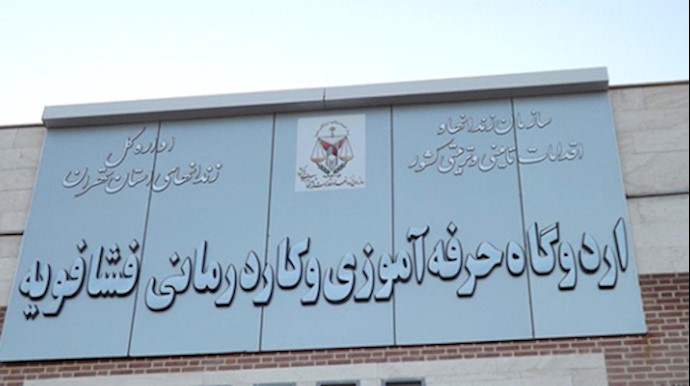Reported by PMOI/MEK
Iran, Aug. 27, 2018 – On August 21, Nader Fatourechi, a writer, and reporter affiliated with the factions in the Iranian regime was arrested in another row of internal feuds between groups of power and connections among the establishment.
He spent four days in the quarantine section of Fashafuyeh Prison and after his release, wrote a portrait about the situation of the inmates imprisoned there, calling their conditions “inhumane.”
Fatourechi was arrested after exposing some of the jobbery that had happened in the “Teachers’ Reserve Fund.” According to his account, he was released after his father provided the bail money.
Fashafuyeh Prison also called the Great Tehran Penitentiary, Tehran Central Prison or the Hassanabad-Qom Prison, is a prison approximately 32 km south of Tehran. Since its creation in 2012, Fashafuyeh Prison has been a source of horrific reports of human rights abuses.
Fatourechi writes: “Drawing attention to conditions of the “ordinary prisoners” in Fashafuyeh is an urgent and immediate necessity. No one in Iran is more oppressed and vulnerable. They exist in the epitome of “inhumane conditions” and are victims of a twofold oppression. To bear this, even for one day, is beyond the power of the human spirit and will undoubtedly cause permanent trauma to their body and soul. Every day, the number of cases like these only multiply.”
The prison quarantine: A living hell
Referring to the prison quarantine that every new prisoner has to endure for four days, Fatourechi writes: “Among inmates, the colloquial name for the quarantine ward is Hell… The prisoners said the difference in living conditions between the tip and quarantine wards are analogous to those between a bedroom and a toilet.”
Fatourechi compares the current conditions in the quarantine with his previous experiences and concludes: “Having witnessed the quarantine ward on three different occasions in the 90s and 2000s, I can definitively corroborate their accounts of how “grave” the conditions in Fashafuyeh’s quarantine ward really are.”
A prison without public restrooms, prisoners are treated like livestock
He continues, “In a routine four-day quarantine period, the prisoner, regardless of crime or sentence, is deprived of potable water, ventilation, toilets, cigarettes, and digestible food (there is cold, half-baked pasta, and cold, uncooked yellow rice).”
His report about the Fashafuyeh prison further states: “The toilet is a hole on the floor of a 2X2 foot area without light or running water, separated by a curtain from the ward’s beds and 10X10 foot cells, known as Physicals, that house between 26 and 32 prisoners. The living conditions in the physicals are so inhumane that quarantined inmates call them the Exile.”
He continues, “Quarantine cells have three-tier bunk beds and two blankets spread on the floor. Two glassless skylights are all they have to regulate temperature. There is no running water between 4 p.m. and 7 a.m., and the only light glows from a 100-watt fluorescent bulb. Should it burn out, the prisoners say, only God could make someone replace it.”
According to him the density in the prisoner cells is due to an “incredible daily influx of new prisoners” where “Every 24 hours or so, more than 40 new prisoners are brought to the quarantine ward, while a maximum of ten [prisoners] leave the ward each day.”
Fatourechi says that “more than 80 percent of the quarantine inmates are intravenous drug addicts and homeless people unable to stand on their own feet who belong in a hospital, not a prison.”
He also describes the conditions of “floor sleepers,” who according to him are usually “Afghans and intravenous addicts” as “similar to those in coffins, the coffin-sized cells reserved for political prisoners in the 1980s that were barely large enough to lie down in.”
“In the cramped conditions, floor sleepers are sometimes pushed to spending the night beneath the beds of other inmates. Coined as “coffin sleepers,” it is typical for other inmates to sit on the floor next to their sleeping enclosure, restraining their movement and blocking their access to light and air,” he writes and adds, “The stench of sweat and infected wounds is unbelievable. Many inmates are detoxing from drug addictions and are in no state to be taken to the so-called ‘bathroom’ to wash up, which thickens the stench.”
According to Fatourechi, “Drug addicts, theft convicts, ‘dirty ones’ and Afghans are treated like livestock from the moment they step foot in the ward.”
Poor families deprived of knowledge about their relatives
Fatourechi also describes the situation of the poor families of the inmates. He writes: “Another deplorable element of Fashafuyeh is its perimeter. Families of prisoners sit in the desert outside, and no one (i.e. the few soldiers on outside duty) knows who is incarcerated in the prison (either that or they don’t reveal to the families what they know). This is critical when Fashafuyeh prisoners come from poor families who can only come by taxi, at a cost between 1-1.5 million rials [approximately $10 to $15 USD].”





